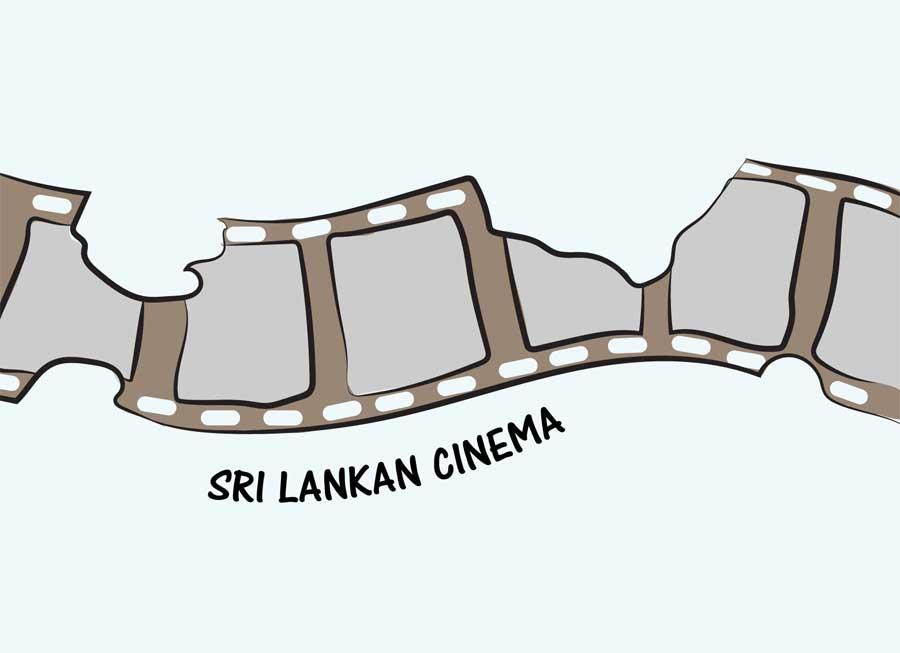22 Jan 2021 - {{hitsCtrl.values.hits}}

When one walks along the road of Sinhala cinema that spanned 74 years on January 21 (yesterday) it brings both tears and joy.
The Sinhala Sri Lankan cinema commenced in 1947 with the screening of ‘Kadawuna Poronduwa’ (the Broken Promise) which set the stage for more memorable films. The industry which produced films that touched the hearts of the audience and thrived now gasps for breath due to the present pandemic and the lack of quality movies.
Actor turned film director Roshan Ravindra in a recent newspaper interview questioned whether some of the present cinematic productions can serve as a tool for education to a student audience?
The COVID-19 pandemic is inevitable. But the film directors and scriptwriters can work harder to make productions that make viewers reflect on their lives and see some parts of them in the characters portrayed.
The cinema is a powerful media tool and can convey a message quite effectively. In the early cinematic productions filmmakers highlighted issues faced by the public and exposed corrupt politicians and officials. Given this scenario it’s questionable whether any regime would genuinely lend a hand to a struggling local cinema industry.
It’s a known fact and common idea shared by artistes that ‘one can think of good times for a cinema only when there is a leader who sees the importance of the existence of a cinema industry.
In the past films, stage dramas (the nursery which produced artistes) and film directors have experienced severe hardships ‘thanks’ to dictatorial regimes.
Slain media personality and actor Richard de Soysa became a threat to the government and is believed to have been bumped off by a killer squad. This is a time to remind the regime that filmmakers must have a healthy environment to produce the film that an era demands. This may not be the time to produce a movie on slain rugby player Wazeem Thajudeen, but someone hopefully will when the environment is perfect for it. In the present environment the local cinema and much so the television industry receive stiff competition from ‘imports’. And given that local actors perform in tele series and the wide screen they are forced to sign up for mega television series which often
lack quality.
Film and tele series producers are forced to live off the money they make hence the production of a quality tele or movie can’t be guaranteed often.
Another point raised is that budding artistes don’t have a school to graduate from. But the counter point to this is the query raised as to what good it serves in establishing an acting school when the local theatre is struggling? Critics argue that the cinema as an industry must be strengthened first.
Sri Lankans in general are shortsighted when it comes to planning. This can be applied in relation to issues associated with the cinema too. When one recalls the 1983 communal riots they bring to mind the burning down of many cinemas in the country. Sapphire (Wellawatte), Raj (Negombo), Plaza (Wellawatte), Trio (Dehiwala), Kalpana (Narahenpita) and Gamini Hall (Maradana) were some of the film halls that were destroyed during the riots because there were owned by Tamils. Little did barbaric Sinhalese rioters give thought to the fact that there were contributions made to the Sinhala films by Tamil musicians, producer and directors. In this context K.Gunarathnam and M. Masthan come to our minds.
As a nation we were so proud on Thursday in celebrating the 74th anniversary of the film ‘The Broken Promise’. But we can’t be proud of the fact that Vijaya Studio in Hendala was burned down during the 1983 riots; a building which contained films reels of some of the best Sinhala movies. The same must be said of the killing of K.Venkat and the beating up of M.K Rocksami back then.
At a time when the present generation actors have little or no clout in the real life mention must be made of Vijaya Kumaratunga for going beyond the roles played in the cinema and attempting to defuse the tension in areas controlled by tiger rebels; during a trip made to the north in1985. There was a time when the Sri Lankan cinema produced such powerful personalities.
Right now the curtains have been raised in some of Colombo cinemas and the sixth edition of the Jaffna International Cinema Festival is in progress. All that’s fine. But we must still underscore that despite the presence of digital technology the success of a film is still judged on whether the audience rates movie as ‘good’ or ‘bad’ and not whether it’s artistic or simple.
30 Nov 2024 59 minute ago
29 Nov 2024 29 Nov 2024
29 Nov 2024 29 Nov 2024
29 Nov 2024 29 Nov 2024
29 Nov 2024 29 Nov 2024